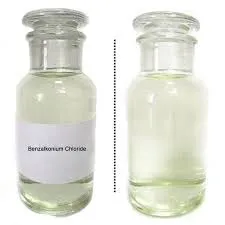different types of flocculants
Different Types of Flocculants An Overview
Flocculants are essential agents employed in various industrial processes, particularly in water treatment, mineral processing, and wastewater management. Their primary function is to aggregate fine particles into a floc, facilitating their removal from liquids. Understanding the different types of flocculants and their specific applications is crucial for optimizing processes and achieving desired results. This article delves into the various types of flocculants, categorized based on their composition, charge, and form.
1. Organic Flocculants
Organic flocculants are derived from natural or synthetic materials, commonly used in water treatment. They are often classified based on their charge
- Cationic Flocculants These flocculants carry a positive charge and are particularly effective in treating negatively charged particles, such as organic matter and suspended solids. Common cationic flocculants include polyacrylamides and natural polymers like chitosan. They are widely used in municipal wastewater treatments and paper manufacturing.
- Anionic Flocculants Anionic flocculants have a negative charge and are used primarily for applications involving positively charged particles. They help in dewatering processes and are often used in mineral processing to improve the separation of valuable minerals from waste.
- Nonionic Flocculants These flocculants do not carry any charge and are used in specific situations where ionic interactions are not beneficial. Nonionic flocculants are often employed in industries that deal with a wide range of pH levels or in combination with other flocculants to enhance efficiency.
2. Inorganic Flocculants
Inorganic flocculants, typically salts of metals, are known for their rapid coagulation characteristics and cost-effectiveness. Common inorganic flocculants include
- Alum (Aluminum Sulfate) One of the most widely used flocculants, alum serves as a coagulant in water treatment processes. It acts by neutralizing the charge on particles, allowing them to clump together and settle out of the water.
different types of flocculants

- Ferric Chloride Another popular inorganic flocculant, ferric chloride, is effective in treating industrial effluents and drinking water
. It reacts with organic and inorganic materials, facilitating the formation of larger flocs.- Polymerized Aluminum Silicate This flocculant promotes particle agglomeration and is particularly efficient in removing turbidity from water.
3. Biopolymer Flocculants
Biopolymer flocculants are derived from natural sources, offering a more environmentally friendly alternative to synthetic options. They are biodegradable and non-toxic, making them suitable for sensitive applications
- Starch-Based Flocculants These are derived from natural starch and modified to enhance their flocculating properties. They are particularly effective in mining and paper industries.
- Xanthan Gum and Guar Gum These natural polysaccharides are effective in various applications, including food processing and wastewater treatment. Their ability to enhance floc formation and improve viscosity makes them versatile options.
4. Hybrid Flocculants
A relatively new category, hybrid flocculants combine organic and inorganic components to optimize performance. These flocculants leverage the strengths of both types, providing superior flocculation properties while minimizing drawbacks such as toxicity or environmental impact.
Conclusion
Choosing the right flocculant depends on the specific application and the characteristics of the materials being treated. Understanding the differences in charge, composition, and environmental impact can significantly influence the efficiency of water treatment and other industrial processes. As sustainability becomes a growing concern, the development of eco-friendly flocculants, such as biopolymers, represents an important trend in the industry, promoting effective treatment solutions with reduced ecological footprints. By continuing to explore and innovate in the realm of flocculants, industries can enhance both their operational efficiency and commitment to environmental stewardship.
-
Understanding Polycarboxylic Acids: Properties, Applications, and Future PotentialNewsJul.28,2025
-
Scale Inhibitor Explained: How to Protect Your System from Limescale and Hard Water DamageNewsJul.28,2025
-
Scale and Corrosion Inhibitors: Essential Chemicals for Industrial Water System ProtectionNewsJul.28,2025
-
Polyaspartic Acid: A Biodegradable Polymer for Sustainable ChemistryNewsJul.28,2025
-
Isothiazolinones: A Versatile Antimicrobial Class with Industrial Power and Regulatory ChallengesNewsJul.28,2025
-
A Deep Dive into 2-Phosphonobutane-1,2,4-Tricarboxylic Acid (PBTC)NewsJul.28,2025





